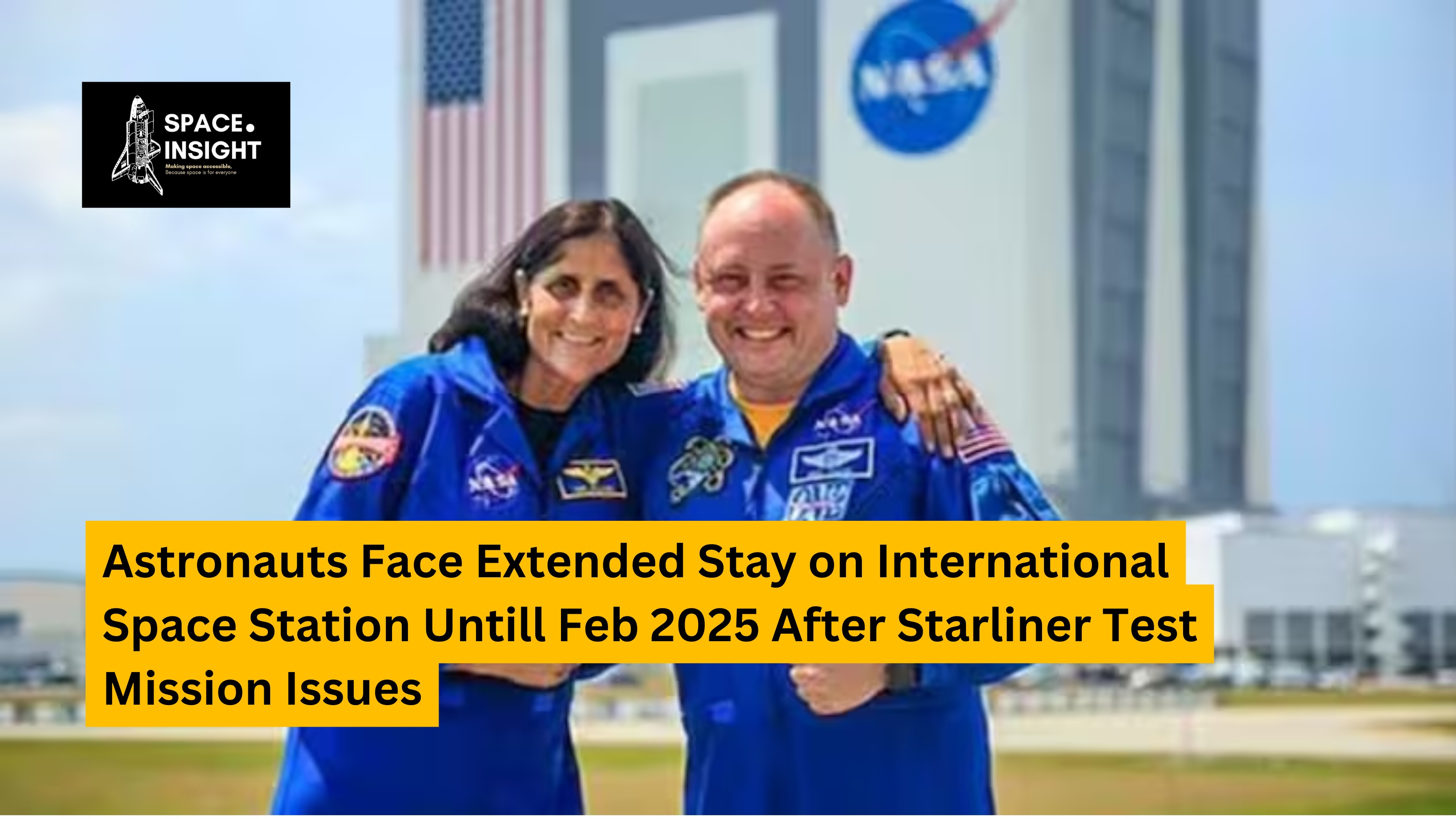Astronauts Face Extended Stay on International Space Station Untill Feb 2025 After Starliner Test Mission Issues
On June 5, 2024, American astronauts Barry "Butch" Wilmore, 61, and Sunita Williams, 58, embarked on a historic test mission to the International Space Station (ISS) aboard Boeing’s Starliner spacecraft. What was initially planned as an eight-day mission has now extended to nearly 80 days, with the astronauts facing the possibility of spending several more months in space.

image source: MoneyControl
Unexpected Challenges in Space
The test flight marked the first crewed mission for Boeing’s Starliner, part of NASA's Commercial Crew Program, designed to transport astronauts to and from the ISS. The mission was crucial for evaluating the Starliner’s capabilities before its regular use. However, as the spacecraft approached the ISS, it encountered significant issues, including propulsion system leaks and malfunctioning thrusters. Although Wilmore and Williams reached the ISS safely, these problems have prevented a safe return to Earth using the Starliner.
As a result, the astronauts are now indefinitely stranded aboard the ISS, with NASA and Boeing working to determine the best course of action. During a recent press briefing, Steve Stich, manager of NASA's Commercial Crew Program, emphasized that while returning the crew on the Starliner remains an option, alternative plans are being prepared to ensure their safe return.
A New Plan for the Return Journey
On August 24, NASA announced a plan to bring Wilmore and Williams back to Earth in February 2025, aboard SpaceX’s Crew Dragon spacecraft, specifically with the Crew-9 mission. The Starliner, meanwhile, will return to Earth without a crew, allowing NASA and Boeing to further investigate and resolve the technical issues that arose during this mission.
This decision underscores the importance of NASA’s Commercial Crew Program, which involves both Boeing’s Starliner and SpaceX’s Crew Dragon as part of a multi-billion-dollar contract to provide reliable transportation to and from the ISS. Since 2020, SpaceX has successfully completed nine crewed missions for NASA, contrasting with Boeing’s more challenging debut.
Ongoing Investigations and Future Missions
NASA Administrator Bill Nelson and other NASA leaders conducted a thorough Test Flight Readiness Review on August 24 to assess the current status of the mission and make necessary adjustments. The review included evaluating technical data, mission progress, and the steps required to safely return the astronauts.
The extended mission, though unexpected, has provided valuable data for NASA and Boeing. This information will be crucial for improving the Starliner’s systems before it is used for future crewed missions. Despite the setbacks, the experience gained from this mission will contribute to the overall success of NASA’s goals for space exploration and commercial partnerships.
As Wilmore and Williams continue their extended stay on the ISS, their resilience and adaptability highlight the challenges and unpredictability of space exploration. Their mission, although longer than planned, will play a vital role in shaping the future of space travel.



